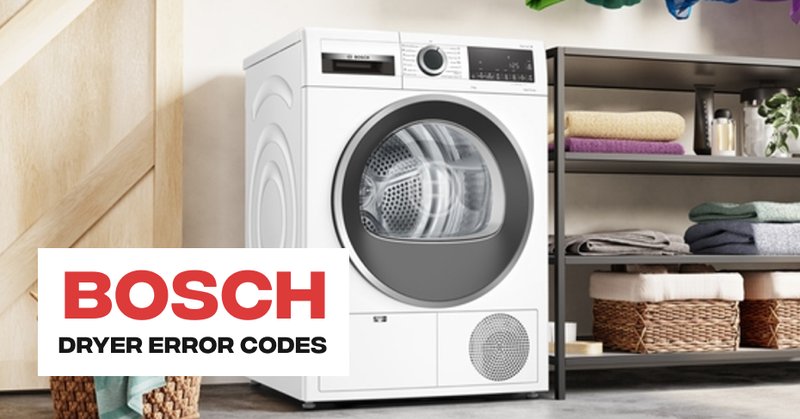
Picture this: You’ve just hit the start button on your trusty Bosch dryer, eagerly anticipating the warm, comforting hum that signals clean, dry clothes in your near future. Then, out of nowhere, you see an “E1” staring back at you from the control panel. Your first thought might be to shrug it off and try again later, but here’s why that’s not the best idea. Ignoring the E1 error could lead to a cascade of issues that not only disrupt your laundry routine but could also potentially spell trouble for your dryer down the line.
Understanding the Bosch E1 Error Code
To tackle the problem, it’s essential to first understand what the E1 error code means. In the realm of dryers, Bosch uses error codes as a built-in alert system—like a little messenger waving a red flag that something isn’t quite right. The E1 error code is primarily associated with issues in the dryer’s heating system. Simply put, your dryer isn’t heating up as it should. Imagine going out in freezing weather without a coat; you’d feel the chill, and so does your dryer when it can’t generate the necessary heat.
Why does this matter? Well, without proper heating, your clothes won’t dry efficiently, and you might find yourself running the dryer multiple times just to get one load dry. Not only does this impact your energy bills, but it can also prolong the wear and tear on your appliance. Consider the dryer’s heating system as its heart. When the heart isn’t functioning properly, the whole system can’t perform optimally.
So, if you’re pondering whether or not to fix this error code, think of it as dealing with a leaky roof. Leaving it unattended might not seem critical at first glance, but over time, it could lead to severe damage to the entire structure.
Consequences of Ignoring the E1 Error
You might be tempted to continue using the dryer despite the E1 error, hoping it will magically resolve itself. Unfortunately, this approach is more likely to bring about bigger headaches. One of the most immediate consequences is poor drying performance. Picture this: you load the drum with freshly washed clothes, but when the cycle ends, they’re still damp or even wet. It’s like baking a cake and realizing the oven wasn’t hot enough—disappointing and a waste of time.
Beyond inconvenience, ignoring the E1 error can lead to more serious mechanical issues. With repeated use, the constant strain on the dryer’s components can cause them to fail prematurely. Imagine driving a car with the check engine light on—it might continue running, but with an increased risk of breakdowns and costly repairs. Likewise, a persistent E1 error places undue stress on the dryer’s parts, potentially leading to expensive maintenance or even the need for a new dryer altogether.
This situation can also contribute to higher energy consumption. When the appliance has to work harder and longer to achieve the desired results, your energy bills might skyrocket. It’s akin to leaving a light on all day; it might not seem like much at first, but it adds up over time.
Steps to Address the E1 Error
So, what should you do if you encounter the dreaded E1 error? First, take a deep breath and know that you’re not alone. Many Bosch dryer users have faced this issue, and there are clear steps you can take to resolve it. Start by checking for any blockages in the dryer’s ventilation system. Sometimes, lint or debris can impede airflow, resulting in heating issues. Imagine a straw clogged with a paper ball—liquid can’t pass through effectively, and neither can hot air in your dryer.
If cleaning the vents doesn’t solve the problem, inspect the heating element. This component is responsible for generating the heat needed to dry your clothes. If it’s damaged or malfunctioning, consider reaching out to a professional technician. Handling electrical components can be complicated and is best left to experts who can ensure proper repair and safety.
Finally, if these steps don’t yield results, it might be time to call Bosch customer support. They can provide additional troubleshooting tips or recommend service options. Remember, resolving the E1 error sooner rather than later can save you a lot of hassle and keep your dryer running smoothly.
In conclusion, while it might be tempting to ignore the E1 error in hopes that it will disappear, taking proactive steps to address it is a wise decision. By understanding what this error code signifies, you can take measures to protect your appliance and your peace of mind. Embrace the opportunity to learn about your dryer’s needs and keep it in top shape for many cycles to come.